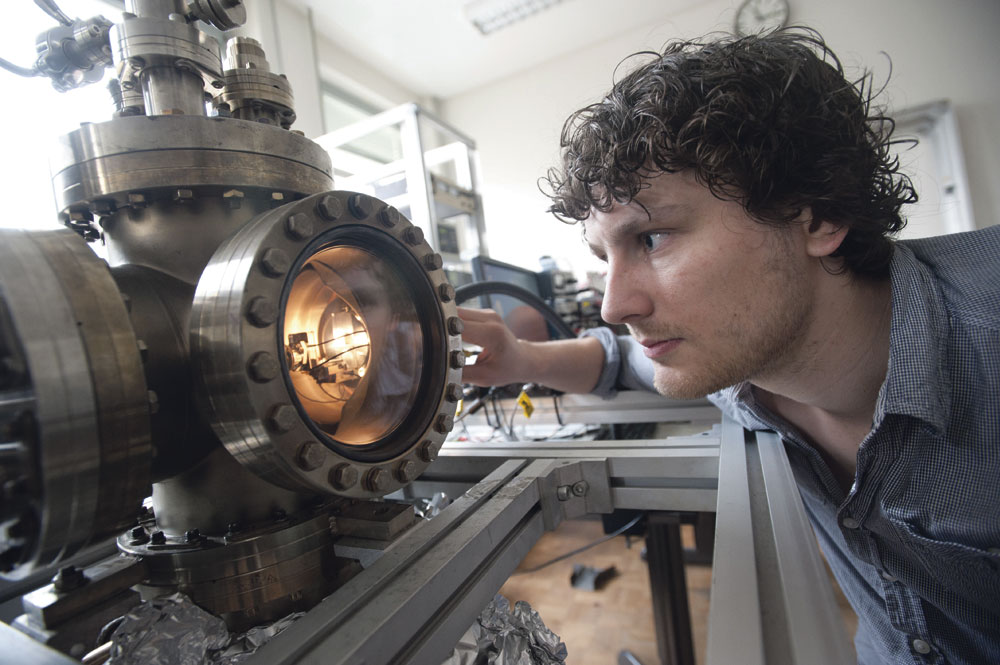Physics student Leon van Kouwen built a 10-centimetre working prototype of an electron microscope as his graduation project.
Typically the beam of an electron microscope is formed within a long tube – up to several meters long.
Inside, sets of condensers focus the powerful beam through carefully crafted magnetic fields onto a specimen under study. “Magnetic or electric fields can focus electrons just like lenses do with light,” says charged particle optics expert Professor Pieter Kruit (Applied Sciences). Electron beam manufacturer CRT, based in Heerlen, contacted Kruit with a request to develop a low-tech electron beam. CRT’s executive director, Paul Aerssens, MSc explains they were looking for another market for their expertise in electron beam manufacture, since most displays have become flat screens.
However, the electron beam in a TV tube is very different from that in an electron microscope. Generally, the electron source in a TV tube is less powerful, and the energy variation between electrons is larger. Both factors contribute to a less-focussed beam.
Kruit holds up a tiny aluminium box the size of a cigarette butt with three holes in it: the electron gun from a small colour TV. It illustrates the cheap technology common in cathode ray tubes – prefabricated metal parts put into a mould and stuck together by strips of molten glass.
Kruit appreciated the challenge and asked fellow student, Leon van
Kouwen, to design, build and test a small electron microscope equipped with electrostatic focussing.
In the lab, it’s hard to believe this is a miniature microscope. Large vacuum vessels, a rattling pump, several high-voltage supplies and amplifiers occupy several tables. What it’s all about however is the small cylinder behind the glass. This is a functioning miniature electron microscope with a resolution of about 30-50 nanometers. But Van Kouwen cannot be sure, since the image is shaken up too much by the vibrations of the vacuum pump.
“We’ve shown that the concept is feasible,” says Kruit, “and we’ll publish that in a scientific journal.” CRT can now develop and build cheap mini EMs and deliver them to the Berlin-based firm, SPECS GmbH, which would like to include such devices in their equipment for surface inspection on the nanoscale.
Leon van Kouwen, ‘Miniaturized SEM based on CRT technology’, Thursday 25 August 2011
Op en langs de Delftse grachten gaven 37 dansgezelschappen afgelopen zondag uitvoeringen in uiteenlopende stijlen: van klassiek ballet tot streetdance. Het was de eerste keer dat dit festival Delfts Waterballet plaatsvond. Het water is honderden jaren de levensader van Delft geweest en speelt nog steeds een grote rol in de stad.



Comments are closed.